Exploring the natural wonders of the United States is an exhilarating experience, but it’s crucial to be aware that some of these beautiful landscapes are also home to wild and potentially dangerous animals. Visitors should be mindful of their surroundings and stay informed about wildlife safety measures to ensure a memorable and safe adventure. Here’s a list of U.S. National Parks where dangerous animals roam freely, reminding us of the untamed beauty of nature.
1. Yellowstone National Park: Land of the Grizzlies and Wolves
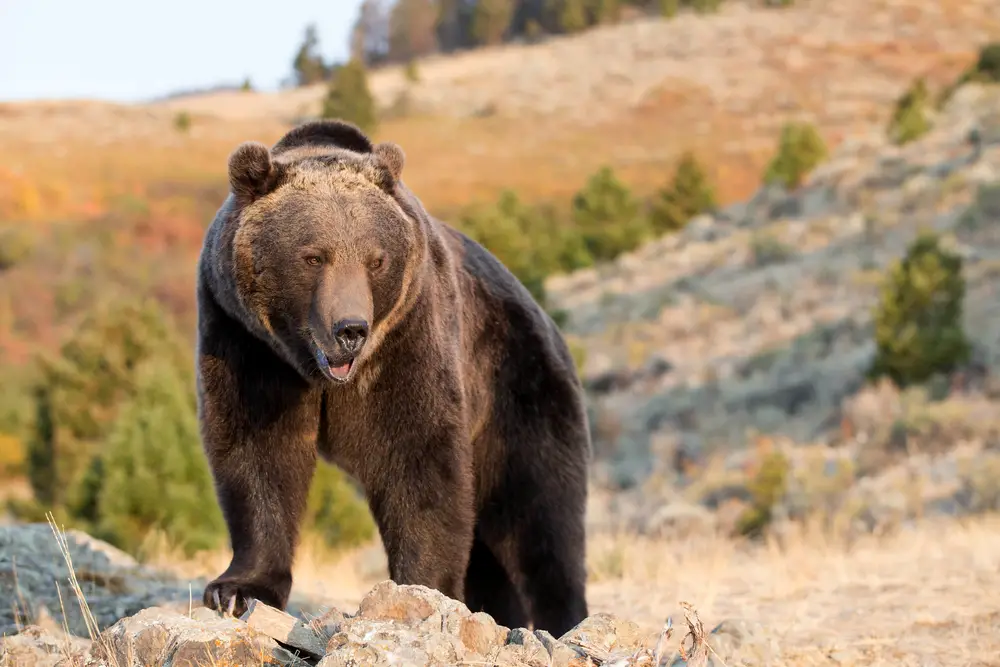
Yellowstone National Park is a mesmerizing wonderland known for its geothermal features and stunning landscapes. However, it’s also a habitat for some rather formidable creatures. Among its wild residents are grizzly bears and gray wolves, which have been reintroduced and are thriving in the park. Visitors are advised to remain at least 100 yards away from bears and wolves and to carry bear spray as a safety precaution. If you encounter a grizzly, it’s important to remain calm, avoid sudden movements, and back away slowly. Don’t forget that these animals are unpredictable, and their natural instincts might kick in if they feel threatened. Adding to the intrigue, wolves are often heard howling at night, a haunting yet beautiful reminder of their presence. Watch for wildlife signs and follow ranger recommendations for a safe visit.
Apart from bears and wolves, Yellowstone also hosts a variety of other wildlife, including bison and elk. While they may appear less intimidating, these animals can be surprisingly aggressive, particularly during mating seasons. Bison, for example, can weigh up to a ton and run at speeds up to 30 miles per hour. Witnessing the park’s ecosystem in action is fascinating, with predator and prey interactions shaping the landscape. As you roam through Yellowstone, remember that you’re a guest in the animals’ home, and respecting their space is crucial.
2. Glacier National Park: Grizzly Encounters and Mountain Majesty
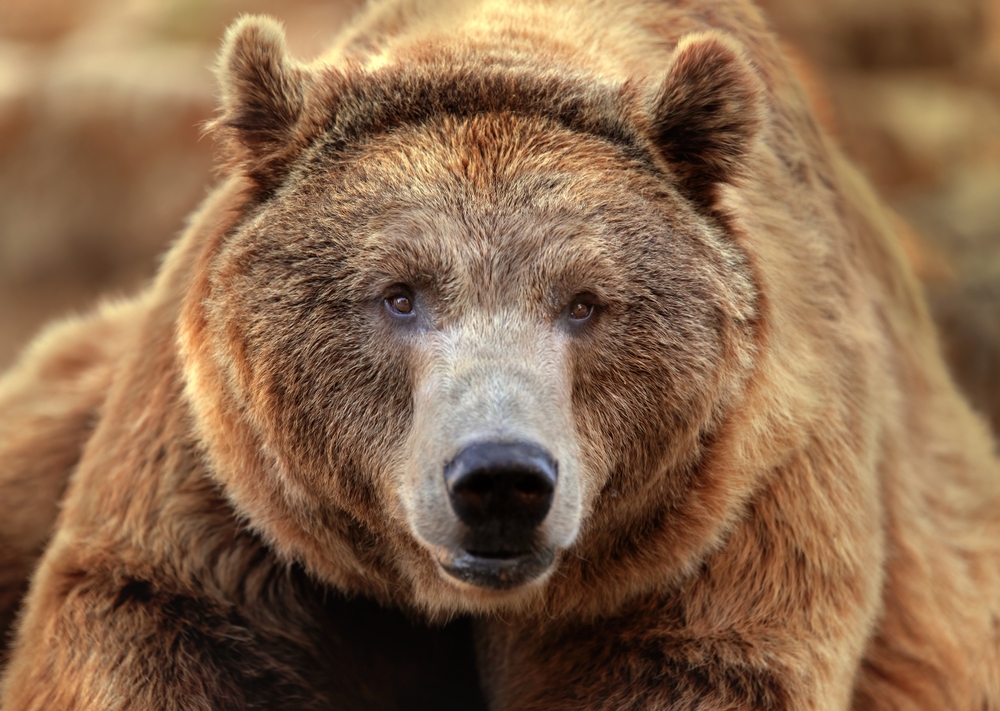
Glacier National Park in Montana is a paradise of rugged mountains and serene lakes, inviting outdoor enthusiasts to explore its trails. However, it’s important to recognize that this stunning environment is also home to a significant population of grizzly bears. These apex predators find sanctuary in Glacier’s expansive wilderness, and encounters with humans are not uncommon, according to National Geographic. To reduce the risk of bear encounters, hikers are encouraged to make noise, travel in groups, and avoid wearing fragrances that might attract curious bears. Bear-proof food containers are a must for overnight adventures to prevent unwanted visitors. The park’s rangers often hold educational programs on bear safety, which are invaluable for visitors unfamiliar with these majestic animals.
Additionally, Glacier National Park is inhabited by mountain lions and moose, both of which can be unpredictable and dangerous if provoked. Mountain lions are elusive, but they have been known to stalk hikers and bikers, especially if they appear to be vulnerable or alone. Moose, on the other hand, might seem docile, but they can become aggressive if they feel cornered or threatened. It’s crucial to keep a safe distance and never attempt to feed or approach wildlife.
3. Denali National Park: Land of the Majestic and the Mighty
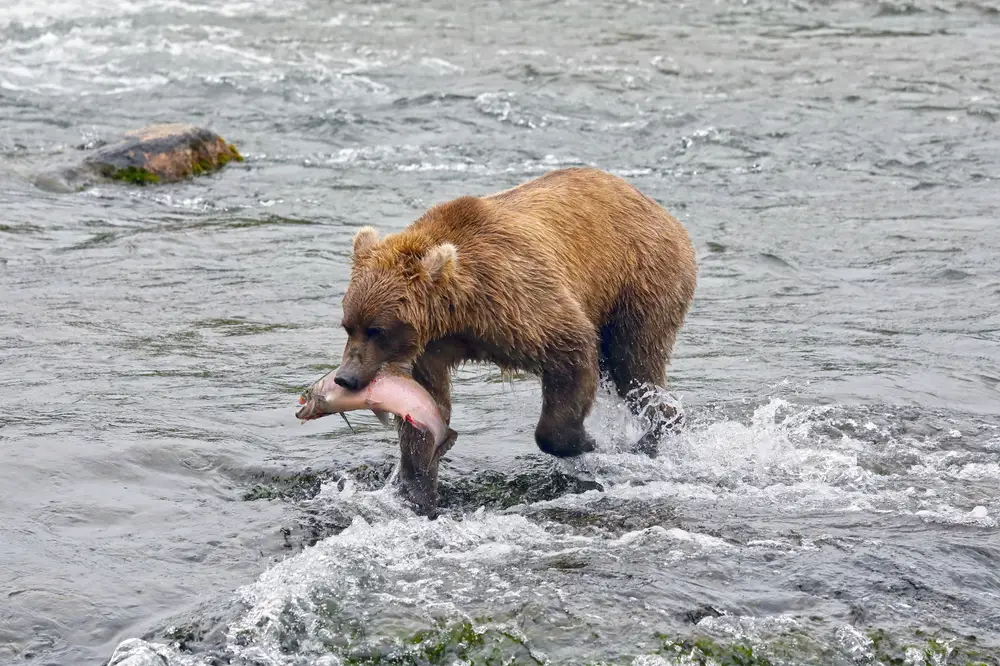
Denali National Park in Alaska is a pristine wilderness, dominated by North America’s tallest peak, Denali. This remote and expansive park is home to an incredible array of wildlife, including grizzly bears, wolves, and moose. The park’s vastness and lack of human development provide a unique opportunity for animals to roam freely, making encounters with wildlife a real possibility. According to the National Park Service, it’s essential for visitors to be prepared for bear encounters, with bear spray and knowledge of bear safety protocols. Moose are commonly seen in Denali, particularly during the fall when their rutting season is in full swing, causing males to become more aggressive. Wolves also inhabit the park, adding to the mystique of its wild allure.
Beyond the commonly noted bears, wolves, and moose, Denali hosts a wide variety of other wildlife that can pose a threat if not respected. Lynxes, although elusive, are predators who might react if cornered or surprised. Dall sheep and caribou are among the park’s iconic species, and while they are not typically aggressive, they should still be admired from a distance. Visitors are encouraged to engage with park rangers to learn more about the wildlife and how to safely observe them.
4. Great Smoky Mountains National Park: Bears and Boars in the Mist
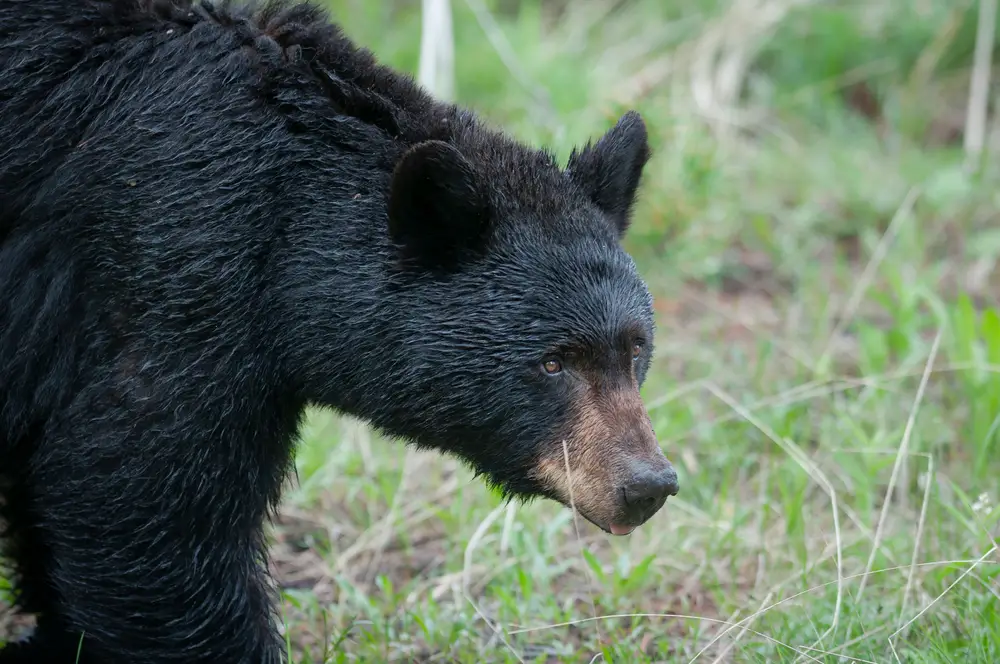
Nestled between North Carolina and Tennessee, the Great Smoky Mountains National Park is renowned for its misty mountain vistas and diverse ecosystems. Home to a significant population of black bears, the park requires visitors to be vigilant and prepared for potential encounters. Black bears are generally less aggressive than their grizzly counterparts, but they are still wild animals with the potential to become dangerous if they feel threatened or are protecting their young. Visitors should avoid feeding bears or leaving food scraps in campsites to prevent habituating them to human presence. It’s important to store food properly and use bear-proof containers to ensure everyone’s safety. In addition to black bears, wild boars are also common in the park. These animals can be aggressive, particularly if they feel cornered or are protecting their young, so it’s wise to keep a safe distance.
While the wildlife may be a draw for nature lovers, it’s their safety and well-being that should always come first. Park rangers frequently patrol the area and offer informative sessions about how to safely coexist with the park’s wild residents. Other animals, such as coyotes and elk, inhabit the park and can be seen during hikes and drives through the scenic byways. The sheer diversity of life in the Great Smoky Mountains makes it a spectacular destination for wildlife enthusiasts. Remember to respect the animals’ natural behaviors and habitats to ensure a harmonious experience.
5. Grand Teton National Park: The Realm of Grizzlies and Bison
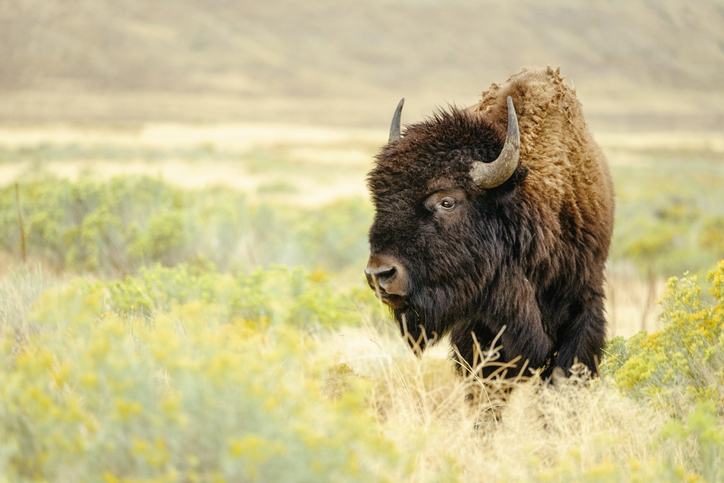
Grand Teton National Park in Wyoming is a masterpiece of nature, with its towering peaks and vibrant wildlife drawing visitors from all over the world. Among its most notable residents are grizzly bears and bison, both of which require a respectful distance to ensure safety. Grizzly bears in the park are an essential part of the ecosystem, and visitors are encouraged to carry bear spray and remain cautious, especially when hiking in remote areas. Making noise and traveling in groups can help reduce the risk of surprise encounters. Bison, although appearing docile as they graze in the park’s meadows, can become unpredictable and dangerous when approached too closely. These massive animals demand respect, and it is crucial to remain at least 25 yards away at all times.
Beyond the bears and bison, Grand Teton is home to wolves, moose, and elk, each adding to the park’s dynamic natural environment. Moose, in particular, can be aggressive, especially during their mating season in the fall. Observing these magnificent creatures from a distance allows visitors to safely enjoy the park’s wildlife spectacles. Park rangers regularly provide updates on animal activity and safety tips, making it easier for visitors to plan their outings responsibly.
6. Everglades National Park: Where Gators Glide
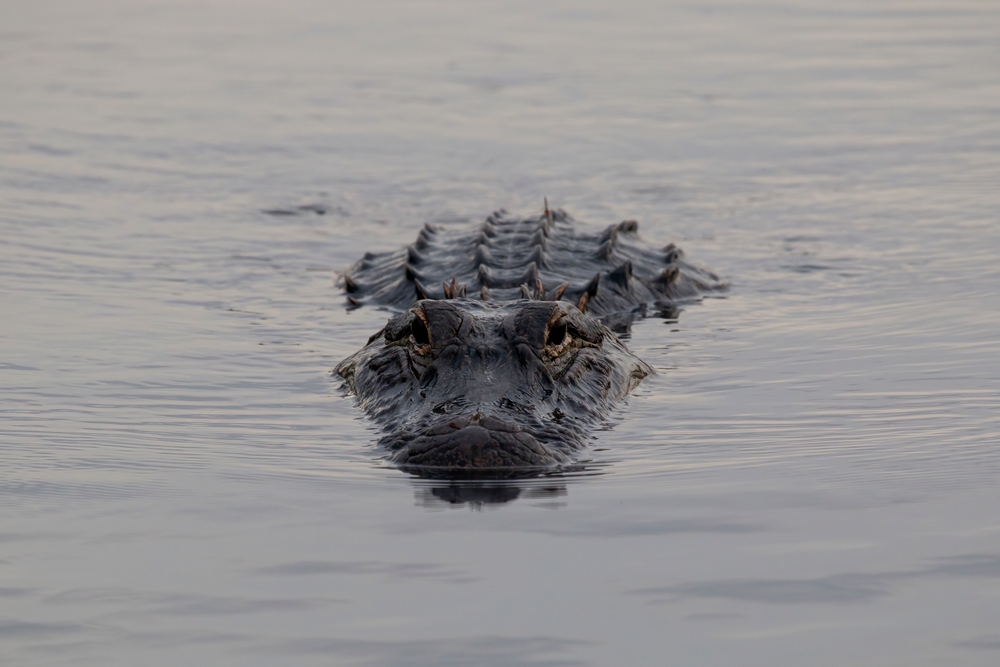
The Everglades National Park in Florida is a unique ecosystem of wetlands and mangroves, offering a sanctuary for many species, including the iconic American alligator. Alligators glide gracefully through the park’s waterways, and while they are generally not aggressive towards humans, it’s important to maintain a safe distance and never feed them. Feeding alligators can lead to habituation, causing them to lose their natural fear of humans and potentially become dangerous. Visitors should stay on designated paths and boardwalks to avoid surprise encounters. In addition to alligators, the Everglades are home to crocodiles, which are more aggressive and should be given an even wider berth. Birdwatchers will rejoice in the abundance of species, including herons and egrets, adding to the park’s allure.
The park’s intricate web of life also hosts the Florida panther, a rare and elusive predator that is a symbol of the region’s wild heritage. While the chances of encountering a panther are slim, it’s important to be aware of their presence in the park. As the Everglades are a dynamic and constantly changing environment, visitors should pay attention to weather conditions, as flooding and lightning are common occurrences. Park rangers are available to provide guidance and answer questions about wildlife safety, ensuring a rewarding and educational visit.
7. Rocky Mountain National Park: High Peaks and Mountain Lions
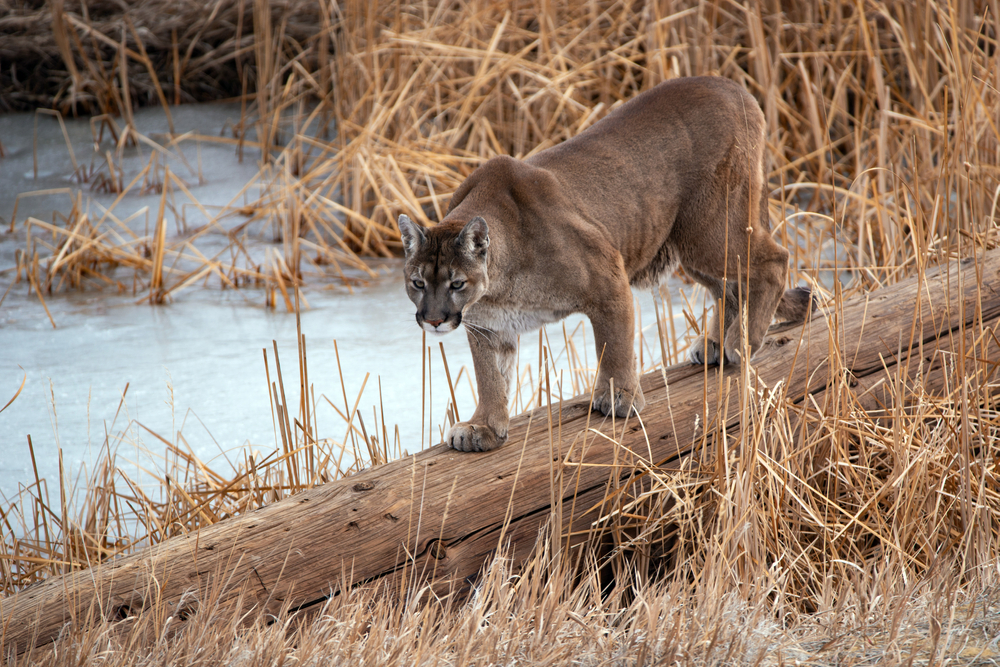
Rocky Mountain National Park, located in Colorado, is a breathtaking expanse of alpine landscapes and diverse wildlife. Among its residents are mountain lions, also known as cougars, which are elusive but present throughout the park. While mountain lion attacks on humans are rare, it’s important for hikers to remain vigilant and take precautions when traversing the trails. Traveling in groups, making noise, and keeping children close are all recommended practices to reduce the risk of an encounter. If you do encounter a mountain lion, it’s crucial to remain calm, appear as large as possible, and slowly back away without turning your back. In addition to mountain lions, the park is home to black bears, which are less aggressive than grizzlies but still require caution.
The park’s diverse ecosystems support a wide variety of other wildlife, including elk, bighorn sheep, and mule deer. While these animals are typically not aggressive, it’s important to observe them from a distance and avoid approaching or feeding them. The rutting season in the fall can lead to heightened aggression in male elk, so keeping a safe distance is vital. Rocky Mountain National Park is also a haven for birdwatchers, with species such as eagles and hawks soaring above the high peaks. Visitors should take advantage of ranger-led programs to learn more about the park’s wildlife and how to safely observe them.
8. Olympic National Park: Rainforests and Roosevelt Elk
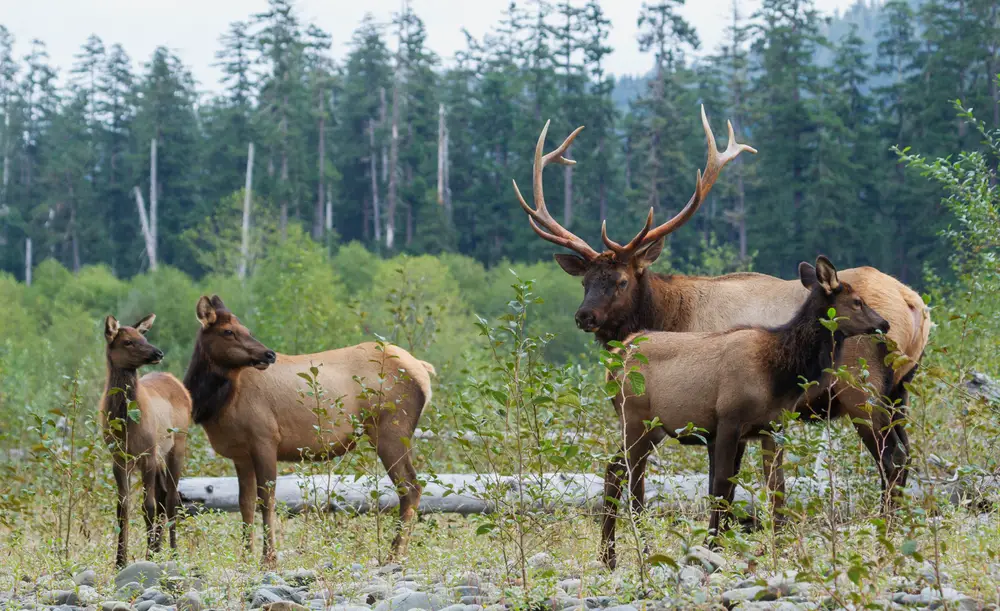
Olympic National Park in Washington state is a diverse wilderness, encompassing everything from lush rainforests to rugged coastlines. Among its wildlife, Roosevelt elk are a prominent feature, roaming the park’s forests and meadows. While they are generally not aggressive, elk can become more territorial during mating season, so it’s important to keep a safe distance. Visitors should be cautious when driving through areas where elk are known to cross roads, particularly during dawn and dusk. The park is also home to black bears and cougars, both of which are elusive but present throughout its diverse habitats. Hikers should make noise and travel in groups to reduce the risk of surprise encounters with these predators.
In addition to its terrestrial wildlife, Olympic National Park’s coastal areas are rich with marine life, including sea otters, seals, and even the occasional whale sighting. Tide pooling is a popular activity, offering a glimpse into the vibrant underwater ecosystem, but visitors should be cautious of slippery rocks and changing tides. The park’s temperate rainforests are teeming with life, from moss-covered trees to a variety of bird species, making it a paradise for nature enthusiasts. Visitors are encouraged to participate in ranger-led programs to gain deeper insights into the park’s unique ecosystems and wildlife.
9. Shenandoah National Park: Bear Country in the Blue Ridge Mountains

Shenandoah National Park, located along Virginia’s Blue Ridge Mountains, is a haven for outdoor enthusiasts and wildlife watchers. Black bears are one of the park’s most notable residents, and while they are typically shy and avoid humans, it’s important to be aware of their presence. To minimize the risk of bear encounters, visitors should store food properly, make noise while hiking, and maintain a safe distance if a bear is spotted. In addition to bears, the park is home to a variety of other wildlife, including deer, bobcats, and a plethora of bird species. Visitors can explore the park’s scenic Skyline Drive, which offers breathtaking views and ample opportunities for wildlife sightings.
The park’s diverse ecosystems, ranging from deciduous forests to open meadows, support a wide variety of flora and fauna. During spring and summer, wildflowers bloom in abundance, adding splashes of color to the landscape. Autumn brings a stunning display of fall foliage, attracting visitors from near and far. Shenandoah’s extensive trail system offers hikes for all skill levels, from leisurely strolls to challenging backcountry adventures. Rangers provide valuable information on wildlife safety and park conservation, enhancing visitors’ understanding and appreciation of this natural wonder.
10. Zion National Park: Red Rocks and Coyotes

Zion National Park in Utah is renowned for its striking red rock formations and deep canyons, drawing adventurers and nature lovers to its stunning landscapes. Coyotes are among the park’s native wildlife and, while generally not a threat to humans, they can become aggressive if they feel cornered or are protecting their young. Visitors should avoid feeding or approaching coyotes, as this can lead to habituation and potential conflicts. The park is also home to mule deer, bighorn sheep, and a variety of bird species, each contributing to the park’s rich biodiversity. Hikers should be aware of their surroundings and stay on designated trails to minimize the impact on wildlife and their habitats.
Zion’s unique geology creates a variety of microclimates, supporting diverse ecosystems and species. The Virgin River, which carved Zion’s iconic canyons, provides a vital water source for the park’s wildlife. Visitors can explore the park’s many trails, from the accessible Riverside Walk to the challenging Angels Landing, each offering breathtaking views and opportunities for wildlife observation. Park rangers offer guided hikes and educational programs to help visitors understand the park’s natural wonders and the importance of conservation.
11. Yosemite National Park: Bears and Bobcats in the Valley
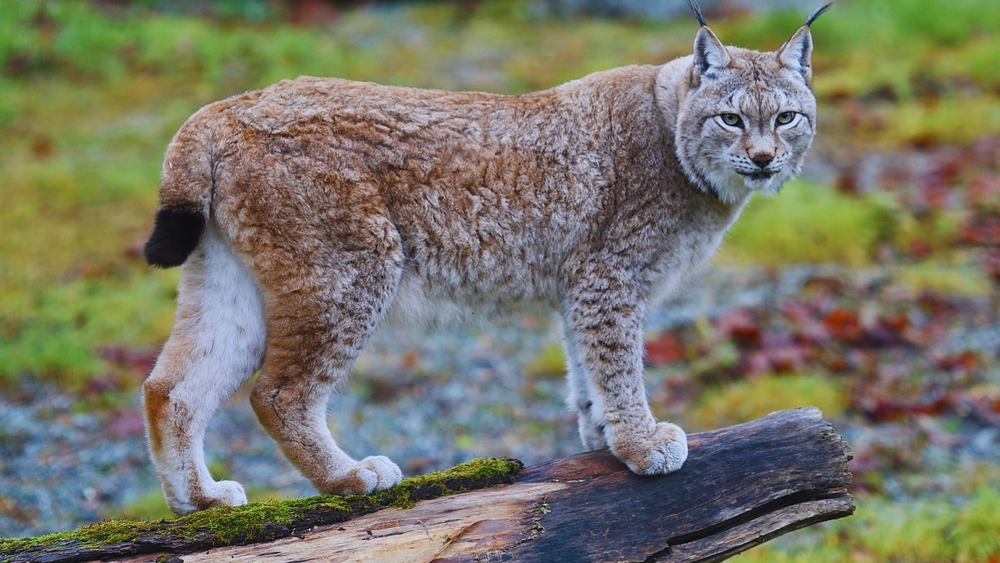
Yosemite National Park in California is famed for its iconic granite cliffs, cascading waterfalls, and diverse wildlife. Black bears are a significant presence in the park, and visitors are encouraged to secure food and scented items in bear-proof containers to prevent attracting these curious animals. While bear encounters are rare, it’s essential to follow park guidelines to ensure both human and bear safety. In addition to bears, bobcats roam the park’s valleys and forests. These elusive cats are generally nocturnal and are not typically a threat to humans, but it’s important to give them space if encountered.
Yosemite’s rich ecosystems provide habitat for a wide variety of species, from deer and coyotes to numerous bird species. The park’s diverse landscapes, which include meadows, forests, and alpine environments, offer endless opportunities for exploration and wildlife observation. Visitors can embark on hikes ranging from easy walks to challenging climbs, each offering spectacular views and the chance to experience the park’s natural beauty. Ranger-led programs provide insights into the park’s ecology and history, enriching visitors’ understanding and appreciation of this remarkable place.
12. Acadia National Park: Where the Ocean Meets the Wild
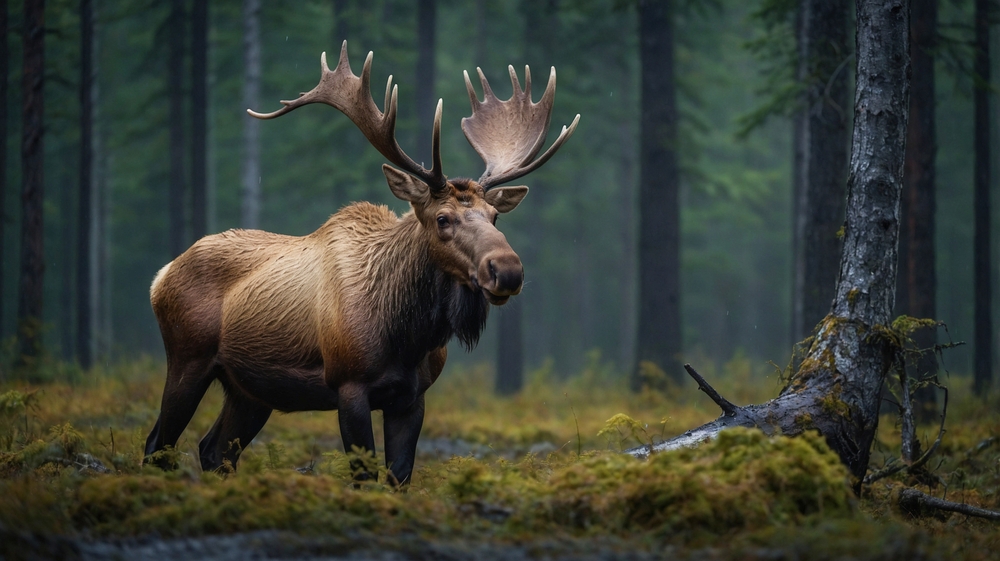
Acadia National Park in Maine is a stunning coastal landscape, where rugged shorelines meet dense forests and rocky peaks. The park is home to a variety of wildlife, including black bears, moose, and the elusive bobcat. While black bears are not as commonly seen as in some other parks, it’s still important to store food properly and remain cautious, particularly in backcountry areas. Moose can be unpredictable, especially during mating season, and should be admired from a safe distance. The park’s diverse habitats also support a rich bird population, including raptors and seabirds, making it a birdwatcher’s paradise.
Acadia’s scenic trails and carriage roads offer visitors the chance to explore its natural beauty at their own pace, whether on foot, by bike, or on horseback. The park’s proximity to the ocean means that marine life is also an integral part of its ecosystem, with opportunities to spot seals and porpoises along the coastline. Tide pooling is a popular activity, allowing visitors to discover the vibrant underwater world teeming with life. Park rangers offer programs and guided walks to help visitors learn about Acadia’s unique ecology and wildlife conservation efforts.
13. Isle Royale National Park: Wolves and Moose in Isolation
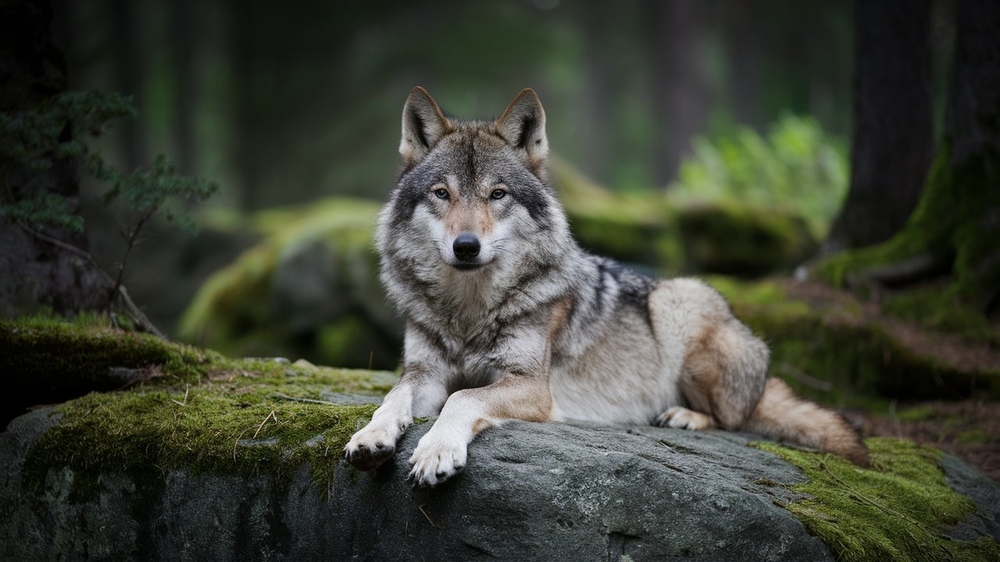
Isle Royale National Park in Michigan is a remote wilderness located in Lake Superior, offering a unique and isolated experience for nature enthusiasts. The park is renowned for its wolf and moose populations, which have been the focus of ecological studies for decades. Wolves are elusive and rarely seen by visitors, but their presence is vital to the park’s ecosystem, where they help control the moose population. Moose, while generally not aggressive, can become unpredictable if they feel threatened, especially during rutting season. Visitors are encouraged to keep a safe distance and never approach or feed the wildlife.
Isle Royale’s isolation makes it a haven for those seeking solitude and a deep connection with nature. The park’s rugged terrain and dense forests provide a home for a variety of other species, including foxes, otters, and numerous bird species. Backcountry camping and hiking are popular activities, offering a chance to explore the park’s pristine landscapes and observe its wildlife. Rangers provide valuable information on wildlife safety and the park’s unique ecosystem, enhancing visitors’ understanding and appreciation of this remote wilderness.
14. Katmai National Park: Bears in the Land of Volcanoes
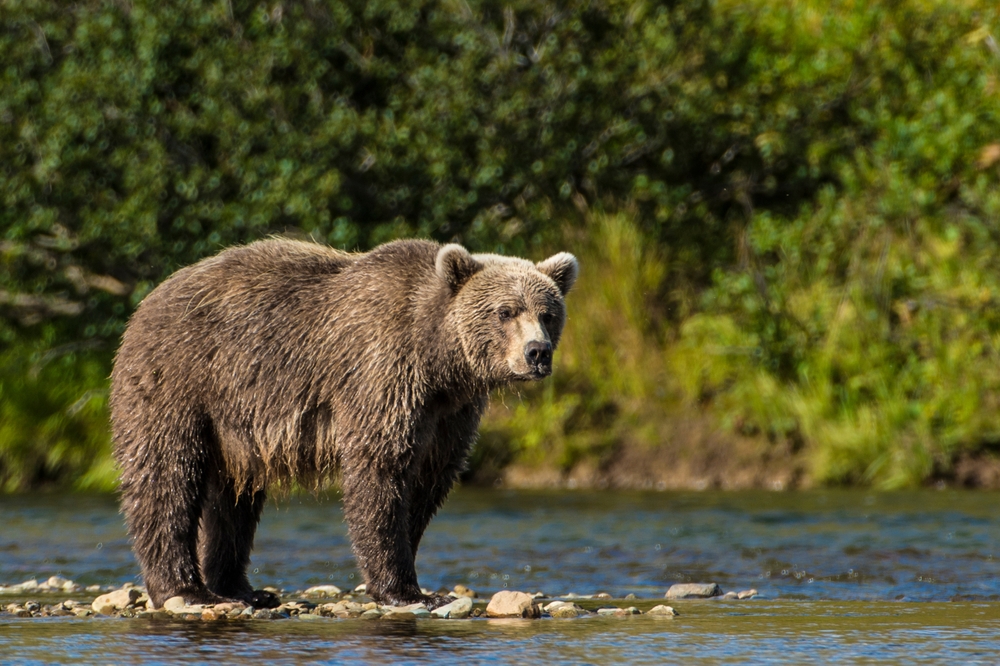
Katmai National Park in Alaska is a land of dramatic landscapes, dominated by active volcanoes and vast wilderness. The park is famous for its brown bears, which congregate at Brooks Falls to fish for salmon during the summer months. These bears are a major attraction, and visitors can safely observe them from viewing platforms, allowing for incredible wildlife photography opportunities. While the bears are accustomed to human presence, it’s crucial to follow park guidelines and maintain a respectful distance to ensure safety for both bears and humans. Aside from its bears, Katmai is home to a variety of other wildlife, including moose, caribou, and wolves.
The park’s unique volcanic landscape creates a diverse range of habitats, supporting a rich array of plant and animal life. Visitors can explore the Valley of Ten Thousand Smokes, a region of ash-filled valleys and fumaroles resulting from the 1912 eruption of Novarupta. Hiking and backcountry camping offer opportunities to immerse oneself in the park’s breathtaking scenery and observe its wildlife up close. Park rangers provide educational programs and guided walks to enhance visitors’ understanding of Katmai’s natural wonders and conservation efforts. By respecting the park’s wildlife and adhering to safety guidelines, visitors can enjoy the unparalleled beauty and adventure of Katmai National Park. Whether fishing for salmon alongside bears or exploring its volcanic landscapes, Katmai offers a truly unique and unforgettable experience.
